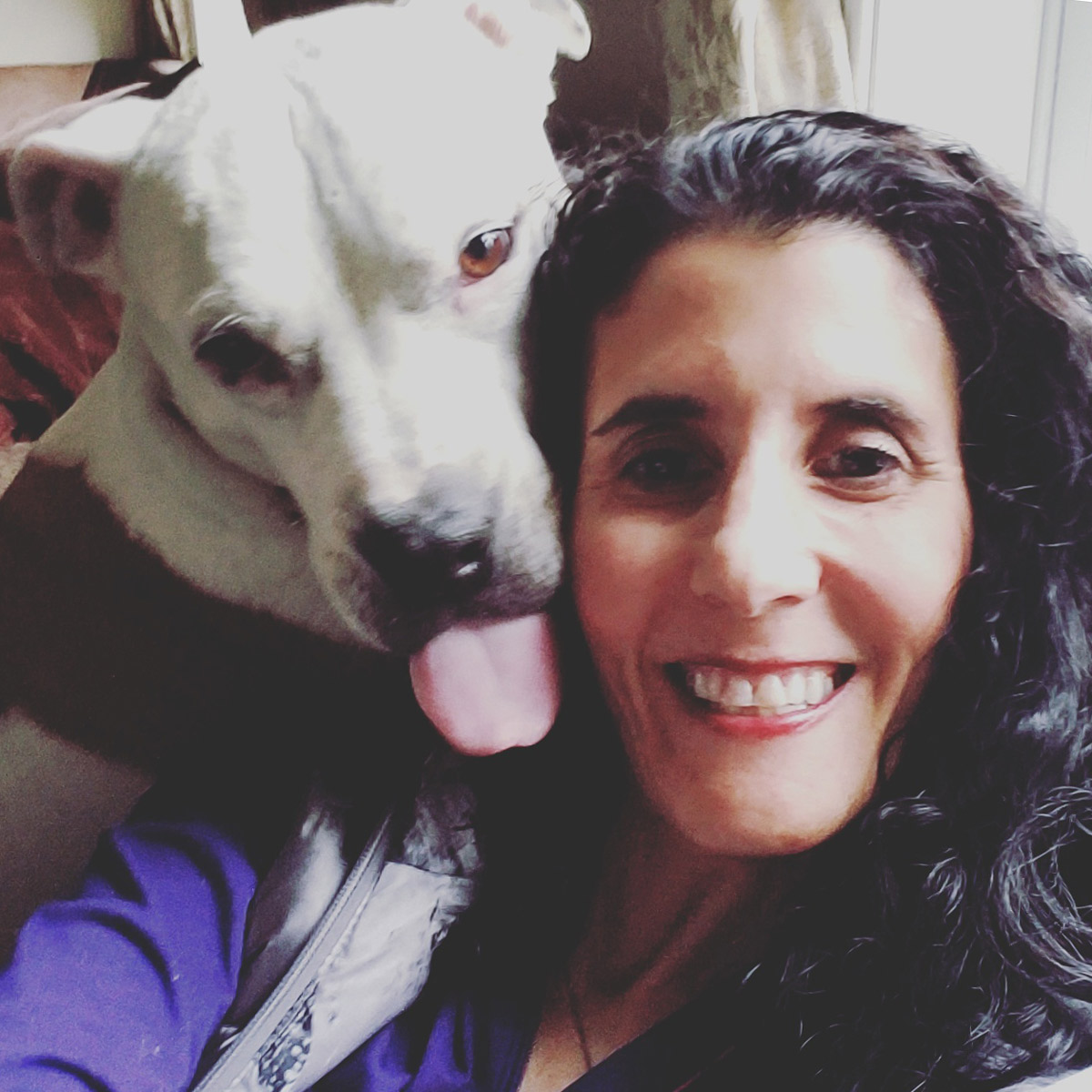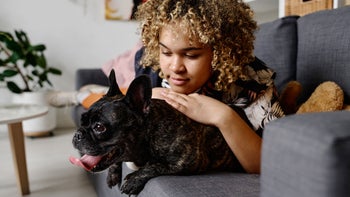
Why Isn’t My Dog Eating? 7 Reasons Your Dog May Be Refusing Food
Key takeaways:
Often, dogs lose their appetite for many of the same reasons humans do, such as dental issues, pain, not liking their food, and stress.
If your dog refuses to eat and has additional symptoms, such as vomiting, diarrhea, or lack of energy, contact your veterinarian immediately.
To encourage your dog to eat, try hand-feeding, warming up their food, or adding water to make their food softer.
Table of contents

Many dogs are highly food motivated, so it’s natural to be concerned if your pup’s appetite has decreased.
Sometimes, your dog may have a few days where they just feel off, but then their appetite goes back to normal. But not eating can also be a symptom of an underlying medical condition. So if you notice changes in your dog’s appetite, it’s best to visit your veterinarian and investigate the possible causes immediately.
What can cause a dog not to eat?
Just like with people, there are several reasons a dog might not eat. Some reasons are more severe than others. Seven common causes for a loss of appetite in dogs are listed below.
Save on the top 10 pet medications
Save big on common pet medications like Fluoxetine and Levetiracetam at your local pharmacy.

GoodRx is NOT insurance. GoodRx Health information and resources are reviewed by our editorial staff with medical and healthcare policy and pricing experience. See our editorial policy for more detail. We also provide access to services offered by GoodRx and our partners when we think these services might be useful to our visitors. We may receive compensation when a user decides to leverage these services, but making them available does not influence the medical content our editorial staff provides.
1. A picky eater
If your pup is being a fussy eater, ask yourself if they have been picky before or if this is a new behavior. If they’ve always been finicky but are in overall good health and maintaining a healthy weight and shiny coat, there is probably not a lot of reason for concern. If your dog has always been a healthy eater and suddenly stops eating, check to make sure their food is not spoiled.
Feeding your dog table scraps or leftover human food may create a finicky fido. A dog who routinely gets human food may not eat because they are waiting for better food.
2. Underlying illness
A lack of appetite in a dog can indicate an underlying medical condition, particularly if any of the following signs accompany the change in eating habits:
Weight loss
Lack of energy
Sneezing
Any sudden change in your dog’s appetite should be discussed with your vet. They’ll want to rule out underlying infections, cancer, and liver or kidney problems.
3. Dental disease
If your dog is not eating their regular food with the same enthusiasm, your veterinarian should examine their teeth. Your pup may not want to eat because they have dental pain when chewing or biting.
Other common signs of canine dental problems include:
Broken or loose teeth
Bad breath
Drooling more than usual
Sensitivity around the face and mouth
Sneezing or nasal discharge
Swelling of the face
Bleeding from the mouth or gums
What do you feed a pup with food allergies? Read all about novel protein and hydrolyzed diets for dogs.
Are avocados bad for dogs? Yes, and so are grapes and cherries. Learn about 30 foods poisonous to dogs.
Can you give your dog Prilosec? Find out in this article about omeprazole for dogs.
Take your dog for periodic X-rays and teeth cleanings. This will help prevent bacteria from building up below your dog’s gumline and causing a serious infection that could impact their health.
4. Pain
Lack of appetite can be a symptom of pain anywhere in your dog’s body. Many illnesses and injuries can cause pain. A dog can have pain because of an infection or dental issues. Even back pain or arthritis pain can make getting to the food dish challenging.
Pain can also result from stomach problems caused by a virus or eating too many table scraps. Many human foods are high in fat and sodium, which can cause digestive problems for dogs.
Read more like this
Explore these related articles, suggested for readers like you.
Other times, dogs have tummy pain because they got into something they shouldn’t have, such as:
Garbage
Caffeine
Other toxic substances
5. Behavior issues
Sometimes, a dog’s refusal to eat is behavioral and related to their circumstances or surroundings. For example, feeding your dog around other dogs or in the same area as a food-aggressive dog may cause your dog anxiety.
Try feeding your dog their meals in a designated spot, free from distractions. If multiple dogs are in the home, ensure each dog has their own spot for their food dish.
6. Food bowl size and placement
Some dogs develop issues related to the type or height of their food dishes. Some dogs prefer plastic bowls, while others prefer glass or metal bowls. You’ll also want to tailor your dog’s food dishes to their needs.
For example, an older dog with arthritis may be most comfortable eating from bowls in a raised platform. Dog breeds with flat faces, such as pugs and French bulldogs, often need a wide, shallow dish to best reach their food.
And be sure to regularly clean your dog’s food bowls. Old, leftover food won’t lend itself to an appetizing situation for your pup.
7. Stress or depression
Like humans, dogs can feel stressed and depressed. Dogs also exhibit many of the same symptoms of depression humans do, including loss of appetite.
Stress or depression can both be triggered by significant changes in your pup’s life, such as:
Moving
Loss of an important human
Loss of a canine companion
Lack of mental stimulation
Major schedule changes in your family’s life
Addition of a new baby or pet to the home
When should you see a vet about your dog not eating?
If you notice a change in your dog’s appetite that doesn’t resolve within 2 days, see your veterinarian for an exam. If your dog is not eating and has other symptoms — such as vomiting, diarrhea, or lack of energy — contact your veterinarian within 8 to 12 hours. Because loss of appetite can indicate illness, your vet will thoroughly evaluate your pup and diagnose the reason for their change in eating behavior.
When describing your dog’s symptoms to your vet, pay attention to whether your dog has been showing an interest in food. In some cases, your dog just may not be hungry and ignore food. Other times, your dog may show they’re interested in food, such as by sniffing at their bowl, but not eat. This information will help your veterinarian get to the bottom of your dog’s lack of appetite.
What can you do to encourage your dog to eat?
Depending on what’s causing your dog’s lack of appetite, there may not be much you can do. For example, if your dog has a virus, they will likely prefer sleeping to eating. And you don’t ever want to force-feed your dog.
But there are a few things you can try to entice your dog to get some nourishment:
Try feeding them tasty canned food rather than dry food.
Offer up a special food that they’re likely to want to eat.
Warm up their food in the microwave, but make sure it isn’t too hot.
Add a little warm water to dry food to soften it up.
Hand-feed your dog, as a little TLC can go a long way.
Flavor their meal by adding a little low-sodium chicken or beef broth over the regular food.
If your dog does not eat within a couple of days, your veterinarian may prescribe a medication that will motivate them to start eating. In addition, treating the underlying cause of your dog’s lack of appetite should help.
Frequently asked questions
Dogs don’t generally go through phases of not eating. If they skip a couple of meals, there could be something wrong. They may be stressed out or have an upset stomach. See a veterinarian if your dog goes 2 or more days without eating or has other symptoms, such as vomiting and diarrhea.
Sometimes, dogs don’t eat but act normal otherwise because they’re being picky or holding out for a treat instead of food. Regardless, if your dog refuses food for a couple of days, take them to a veterinarian.
It’s OK for a dog to go 24 to 48 hours without food as long as they drink water. If your dog stops drinking water or has symptoms such as vomiting, diarrhea, or lethargy, take them to a veterinarian right away.
The bottom line
There are several reasons why dogs stop eating, including stress, an underlying illness, and issues with their food bowls.
If your dog’s appetite doesn’t return to normal within 2 days, it’s best to schedule an appointment with the veterinarian. But if your dog isn’t eating and has other symptoms, such as vomiting and diarrhea, contact your veterinarian within 8 to 12 hours. Addressing the underlying cause of your dog’s lack of appetite should get them back to normal very soon.
Why trust our experts?



References
Bellows, J. (2016). Periodontal disease in dogs and cats. Veterinary Partner.
Brooks, W. (2024). Anorexia, or lack of appetite, in dogs and cats. Veterinary Partner.
Gfeller, R., et al. (2023). Diarrhea and vomiting: First aid. Veterinary Partner.
Hall, B. P. (2014). Clinical signs of oral or dental disease in pets. Veterinary Partner.
Lundgren, B. (2018). Food finicky dogs. Veterinary Partner.
Nowak, S. (2022). Counseling clients on food bowl selection: What’s the dish? Today’s Veterinary Nurse.
Smith, L. (n.d.). Depression in dogs: Causes and treatment. Brevard Humane Society.
Veterinary Information Network. (2020). Signs of pain in pets. Veterinary Partner.
Zurlinden, S. (2021). Resource guarding in dogs. Veterinary Partner.





























